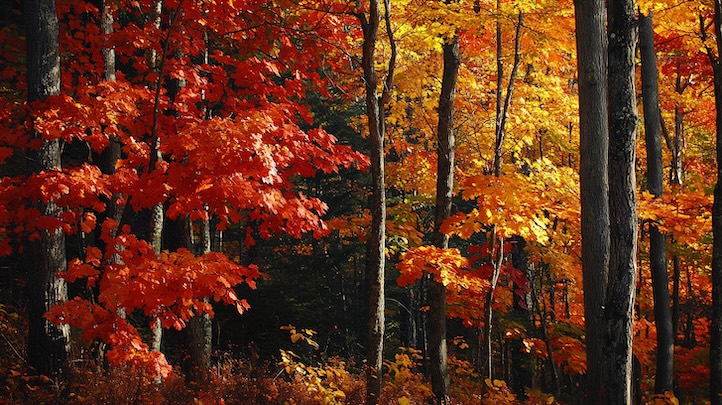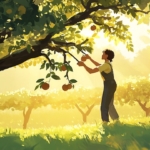Symmetree fall letter: Ever wonder why trees change their leaf colors, and drop them?
 by Galen Lichterfeld
by Galen Lichterfeld
We always welcome this time of year for tree work as the days begin to cool and shorten. The season’s shift is felt by trees as well as us. Have you ever wondered what it is that makes deciduous trees change colors and drop their leaves? According to the U.S. Forest Service, three primary factors determine how brilliant our leaf-peeping season will be: weather, length of night, and leaf pigmentation. As average temperatures drop and nights grow longer, deciduous trees will slow and cease production of chlorophyll, the component that makes leaves green. Trees also gradually stop the flow of fluids through their leaves, building up a thick wall of cells at the base of the leaf in preparation for winter.
When chlorophyll breaks down, two previously underlying pigments will begin to appear. Carotenoids produce orange, yellow and browns of birches, poplar, oak, and aspen, while Anthocyanin paints apples, maples, and ash leaves a bright red or dark purple. Weather will determine the brightness of our fall colors: sunny days and cool nights are the perfect recipe for having fiery fall foliage. Sugar maples (Acer Saccharum), which have high concentrations of anthocyanin, often steal the show with their bright orange and red leaves.
Responsible journalism is hard work!
It is also expensive!
If you enjoy reading The Town Line and the good news we bring you each week, would you consider a donation to help us continue the work we’re doing?
The Town Line is a 501(c)(3) nonprofit private foundation, and all donations are tax deductible under the Internal Revenue Service code.
To help, please visit our online donation page or mail a check payable to The Town Line, PO Box 89, South China, ME 04358. Your contribution is appreciated!



Leave a Reply
Want to join the discussion?Feel free to contribute!